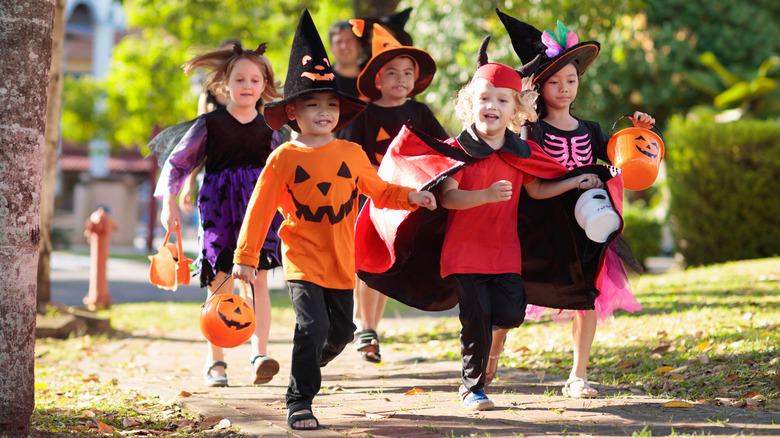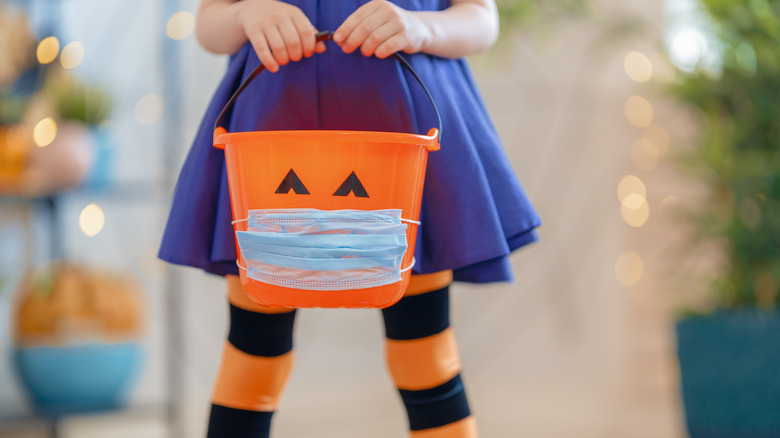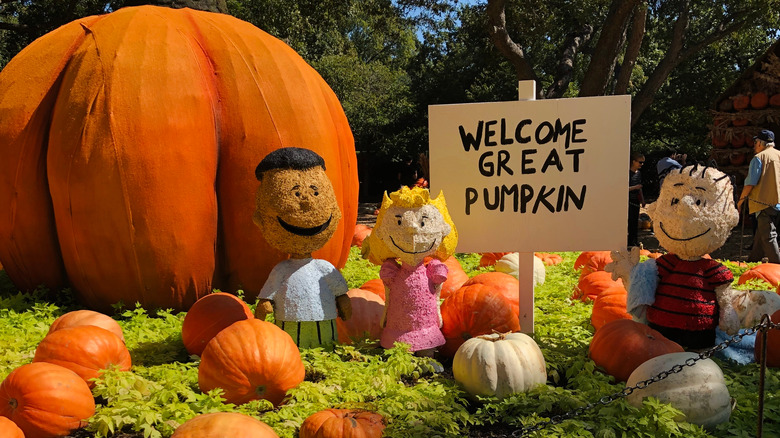How Trick-Or-Treating Became A Halloween Tradition
When you really think about it, Halloween is such a weird holiday. Most of the year, horror is regarded as somewhat of a niche genre. Popular, yes, but not exactly mainstream, except for the 31 days out of the year when suddenly it's all ghosts and skeletons and vampire fangs and rotting zombie corpses (plastic ones, we hope!) everywhere you look. Okay, so, a month-long festival of the macabre is kind of different, but maybe it's a necessary release that helps us as a society come to terms with our own mortality — or something like that.
One aspect of Halloween, however, might need some more explanation. Why do we send small children door to door to beg for candy from strangers, when the other 364 days out of the year, we tell them that candy and strangers is a big fat nope? While The Atlantic notes that 21st century trick-or-treating is quite different, and to some extent replaced by parties and parking lot trunk-or-treat events, there are still many neighborhoods that will see their fair share of door-to-door treat solicitors on October 31. So, how did this bizarre ritual get started? Here's where things really get weird.
Trick-or-treating has ancient roots
The History Channel explains that trick-or-treating has its roots in –- you guessed it, history! Specifically, medieval times when people would dress as ghosts or demons for Samhain (the Celtic celebration of the end of summer and the start of winter, per New Grange) and do a few tricks in exchange for some treats of the edible or drinkable kind.
On November 2, which is still observed as All Soul's Day by the Catholic Church (via Catholic Online), some people would also go door-to-door offering to pray for the homeowner's dearly departed in exchange for a soul cake. (Outdoor Apothecary offers a recipe for a modern version, in case you're interested.) In Scotland and Ireland, a practice called "guising" was, like trick-or-treating, something that young people did, and it also involved dressing up and going door-to-door performing some type of trick in exchange for fruit, nuts, or money.
When did kids in modern times start trick-or-treating?
Time brings the trick-or-treat saga into more recent centuries, saying that the custom was carried over to the new world by Scottish and Irish immigrants starting in the 1840s. The festivities included a fair share of drunken revelry as a part of the general trickery — admittedly, this is still the case with many of today's Halloween celebrations. By the turn of the 20th century, though, Halloween parties started becoming cool with the high school crowd, and by the 1930s, the term "trick-or-treating" came into use to describe some modified form of the old practice of guising, says Time.
It wasn't until the 1950s, though, that trick-or-treating came to be seen as something just for kids. In 1951, History Channel notes that the practice nabbed a mention in a Peanuts comic strip, and the following year it was the subject of a Donald Duck cartoon. It wasn't until 1966, though, that the perennial favorite "It's the Great Pumpkin, Charlie Brown" came out (via iMDb), by which time trick-or-treating was firmly enshrined in the pantheon of nostalgic childhood experiences.


